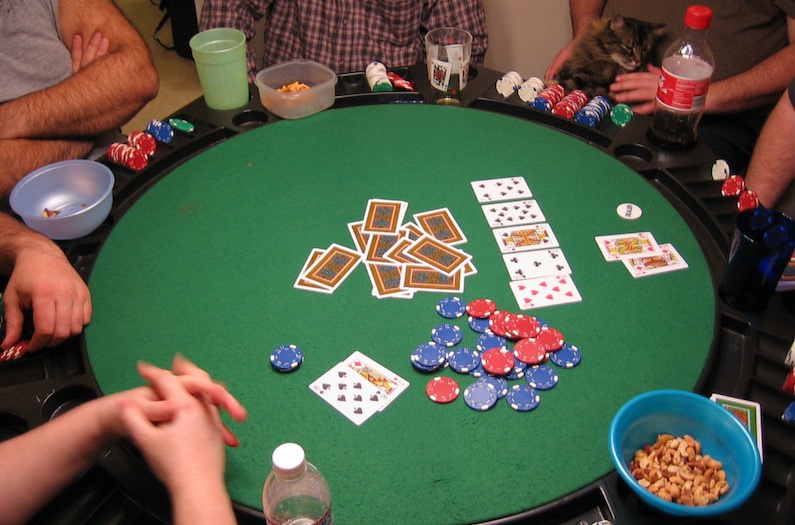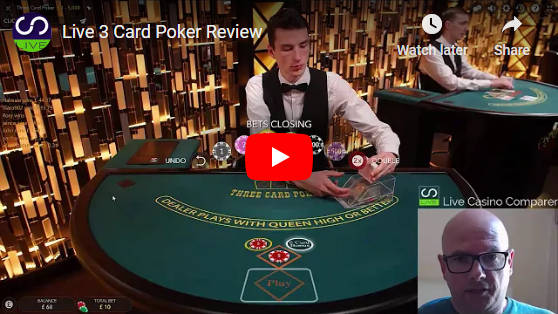Best Three Card Poker Strategy
You’re probably heard of one of the oldest card games played at casinos—poker. But have you ever heard of Three-Card Poker? This is one of my favorite card games played at tables or even on machines at select casinos.
Of course, as with any strategy-based casino game, Three Card Poker leaves the potential for mistakes. And there are 5 common mistakes that many beginners make. If you’re new to Three Card Poker or just looking to brush up on strategy, keep reading as I cover these 5 mistakes. Overcomplicating Three Card Poker Strategy (or Not Using Strategy).
Is There Any Strategy To 3 Card Poker
Being just one single card more than a hand of blackjack, this game is far simpler than other popular poker variants. It’s a great way to learn the ins and outs of the game before you hit the Texas Hold ’Em tables (or even just a friendly game with a group of buddies).
- Develop your thinking abilities and upgrade your level all the time. Typically, the best poker strategy involves some betting and hand collection tricks that can be used at tournaments and other forms of competition. Top Three Card Poker Betting Strategy. Three Card Poker is the easiest-to-play poker variation. It is considered as the basis of.
- The most popular bet on the three card poker table is the Ante & Play bet. This bet can be made alone or in conjunction with the Pair Plus bet. The aim of this bet is to beat the dealers hand with your three card hand. An Ante Bonus can also be won with the right hands. How to Play the Ante / Play Bet.
The rules are similar, with a few exceptions. In the following article, I’ll be going over the rules and payouts that are common for this game.
A Brief History
The casino variant of this game was first created pretty late in the game, so to speak. I was surprised to learn three-card poker was created in 1994 and wasn’t patented until 1997. Created by Derek Webb, the goal was to create a version of poker that was played speedily, like other table games.
Webb had three ideas in mind as he created this variant. He wanted the rules to be easily understood, the payouts were meant to be large enough to attract players, and the house edge was such that casino owners would be keen on adopting it into their businesses.
Webb established a business he called Prime Table Games in order to market his game to casinos in the United States and United Kingdom. Because the UK had regulations against such a table game, his application wasn’t strong enough to convince regulators to change their rules. It was suggested that he gain some experience in the US first.
He caught his first break in Mississippi at the Grand Casino Gulfport when casino VP Barry Morris adopted the game after Webb was rejected in Las Vegas, Reno, and Atlantic City. Just three years later, UK gaming regulations were adjusted to allow the introduction of Three-Card Poker in 2002.
The Basics and Advantages
This game is very similar to a standard game of poker, like Five-Card Draw or even Texas Hold’em. The main difference? You guessed it—you get three cards to make up your best hand instead of the standard five-card hand you’d get with the other two variants we mentioned.
Another difference here is that, as far as which hand you need to beat, it simply comes down to your hand versus the dealer’s hand. That’s right, there’s no need to worry about the other players at the table; though they may or may not be there playing, they also aren’t worried about beating you. This being the case, there’s no need to focus on bluffing or worrying about whether the guy sitting next to you has a superior hand.
Initial Betting

Payouts are obviously going to be vastly different in this game since there’s not a pot in the middle of the table. In order to play, you have to place an ante bet at least.
In addition to the ante bet, you have the option to place an additional bet. The optional bet is the pairs plus bet. After you receive your cards, you also have the option to place a play bet, which is essentially a raise bet.
The optional play bet is whether you want to play your hand against the dealer. Both the ante and play bet only pay out if your hand beats the dealer’s, but the pairs plus bet is paid based on whether you get a pair of cards or better dealt to you. The play bet must be equal to the ante bet. If you don’t place the play bet, you are essentially folding your hand, and lose your ante bet.
Best Three Card Poker Strategy
After the Cards Are Dealt
Now that you have your cards and all possibilities of bets have been laid down, here are the different hands you may get and the probability of each.
In a deck of 52, there are a total of 48 straight flush possibilities. Because there are a total of 22,100 possible hands, that equals to .22%, or roughly 1 out of 460.
Next, we have three of a kind. There are a possible 52 three of a kind possibilities in a standard deck. This gives us .24%, or 1 out of 425.
Now, we’re nearing the more likely, but not entirely likely, scenarios. With a straight, we have a possible 720 three card straights in a deck. With these numbers, we’re looking at 3.26%, or roughly 1 out of 31.
As we move closer to the most likely hands, we are now looking at the same suited flush. Here, we have a possible 1,096 flush options in our deck. This gives us a 4.96%, or roughly 1 out of 20.
Moving along, we are now at the pair. There are a total 3,744 possible pairs in a deck of 52. This stands at 16.94%, or roughly 1 in 6.
At this point, we’re at the most likely hand you are to receive of them all. This is known as the high card hand, and it’s the hand you’ll receive if none of the other listed hands are dealt. There are a whopping 16,440 total possible hands that aren’t listed above in a standard deck. This is the equivalent of 74.39%, or roughly 3 in 4.
Basic Payouts
After the ante and pairs plus bets are placed, the cards are dealt. If the dealer doesn’t receive a queen or better, their hand is folded, the ante bet is returned, and the optional play bet is no longer on the table. If the dealer’s hand is in play, the optional play bet must be equal to the ante bet.
After hands are compared, the ante and play bets are paid out 1 to 1, and an ante bet bonus is paid out as follows: a straight is paid out 1 to 1, or double your bet, three of a kind is paid out 4 to 1, or five times your bet, and a straight flush is paid out 5 to 1, or six times your bet. Most of the time, the house pays the player for ties.
The most common payouts for this bonus pay table are: 50 to 1 for a mini royal in spades, 10 to 1 for a mini royal, 4 to 1 for a straight flush, and 3 to 1 for three of a kind.
If you decide not to place the play bet, your ante bet is forfeited, but the pairs plus bet is still in play.

Pairs Plus
Now that you’re familiar with the different strategy of hands you’re going to receive in this game, let’s talk about the pairs plus bet. This is my favorite bet to lay down because the payouts can get astronomical, and neglecting to put down this bet can have you kicking yourself in the rear when the right cards are dealt.
First, we’ll look at the payouts for a pairs plus pay table without mini royal.
As the name of the bet suggests, you’ll only receive a payout if you receive better than a pair. A pair pays out 1 to 1, meaning you get your bet times two if you score a pair.
Next up, we have the flush. A flush is when all of the cards in your hand are of the same suit. With this hand, the payout is 3 to 1, meaning you will get four times your pairs plus bet.
A straight is when you get three consecutive cards of any suit, including ace, two, and three, all the way up to queen, king, and ace. This will pay out 6 to 1, or seven times your bet.
Three of a kind is pretty self explanatory. The payout here is 30 to 1, or 31 times your bet.
Finally, a straight flush is the ultimate combination of a straight and a flush, or three consecutive cards of the same suit. This hand will pay out a whopping 40 to 1, or 41 times your bet.

Now, let’s move on to the pay table when the house offers payouts for mini royals. A pair pays out 1 to 1 here as well. A flush is paid 3 to 1, straights are paid out 6 to 1, three of a kind are 25 to 1, straight flush gets 40 to 1, and a mini royal is paid out 80 to 1.
Best Three Card Poker Betting Strategy
Conclusion
Best Three Card Poker Strategy Cheat
The primary reason this game was so enticing to this gambler is because of the pairs plus bet. The first time I played the game, I won $460 on a hand by betting $10 on each of the three bets because I got the much desired straight flush. As you can see, the pairs plus can really add up even if you don’t beat the dealer’s hand.
Best Strategy For Three Card Poker
Playing this game will give you a feel of poker while allowing you to play without the stresses of playing against a table of competitors, making it feel a little like blackjack in the style of play. Good luck and don’t forget to place those pairs plus bets!